If you're just catching up to the YouTube saga, have a read of Rafe's excellent "Google blocks Microsoft's Windows Phone YouTube app", which also has links to the previous stories on the matter.
From Google's point of view, they want complete control over what ads are shown on YouTube pages and what video ads are included as pre-rolls before the content users select. So for Google to be blocking YouTube delivery to a Microsoft client which doesn't also handle the ads properly is fair enough - it's ultimately Google's content, in that the company pays for the servers, support and bandwidth.
On other platforms, Android, iOS and (even, shown below) Symbian, Google has written its own (i.e. first party) client for YouTube and submitted it via the appropriate application stores and download sites - that Google hasn't done something similar for Windows Phone surely reflects the rivalry between the two companies and platforms. No doubt Google would have rather not create clients for its services for iOS either, but the latter platform was already too well established and the outcry would have been massive. Windows Phone is still relatively small and young and the risk of offence is less.
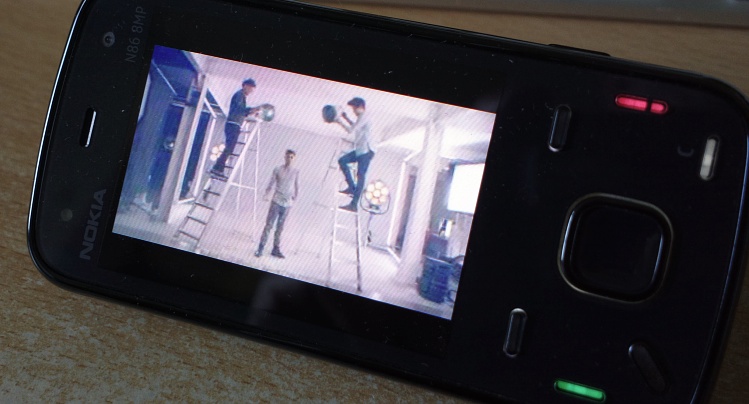
So, let's get this straight. There's still an official and fully working YouTube client for d-pad driven S60 phones from 2008, five years ago, but there's not one for the 2013 Windows Phone??
Of course, where there are enterprising developers, applications will spring up to fill most 'gaps' in a platform and there are dozens of YouTube 'clients', front ends and downloaders, all of which work rather... patchily. All all of which are of slightly dubious legality, to one degree or another.
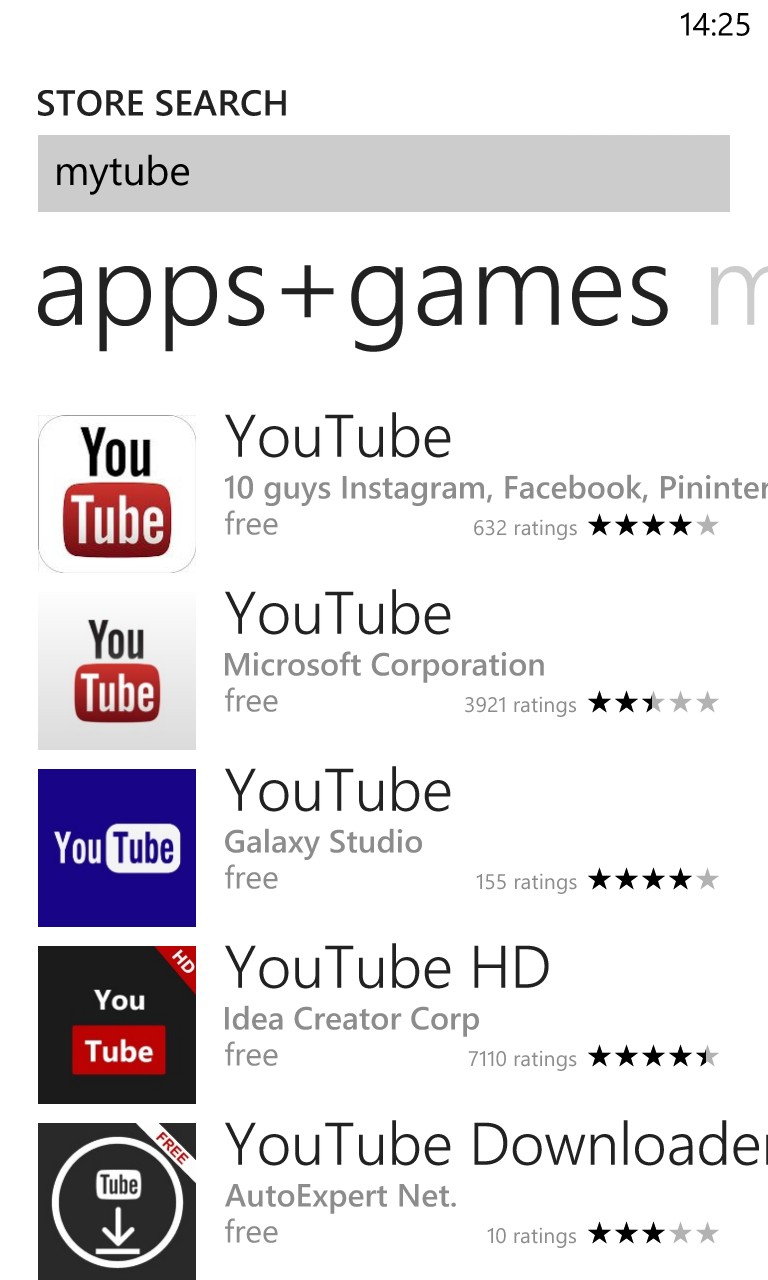

Just some of the various YouTube handlers in the Windows Phone Store - most are not worth bothering with...
The two most polished alternative to Microsoft's currently broken YouTube client are MetroTube and PrimeTube, both of which we've covered before. Yet both fail on some content, usually where YouTube is trying to serve pre-roll content. So, great though there are for general footage, neither offers the whole of YouTube.
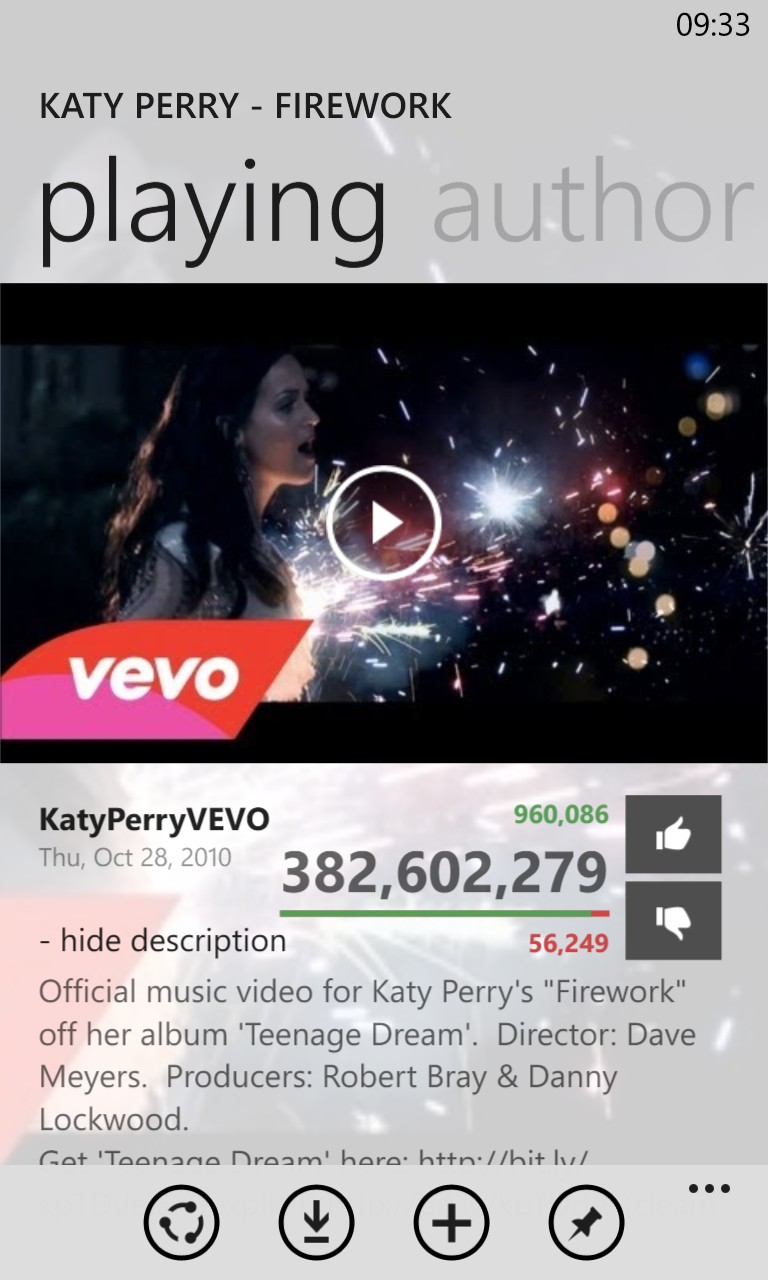

Video playback fail in MetroTube...


...and also in PrimeTube - what's to be done?
The task of liasing with a massive service's APIs, handling a wide variety of content (technically) and handling all the various forms of advertising (that, after all, fund YouTube's very existence), with any of these factors liable to change at a moment's notice just because Google decided to experiment with a new way of doing things, shouldn't be underestimated. But, in light of these difficulties, why not throw all of them back, in terms of responsibility, right back at Google and let it worry about how to serve up video content to your device?
You see, whatever content, adverts and complexities Google has to deal with at their end, on their servers, they're 100% committed to serving it all up in consistent fashion to all mobile platforms, however niche, however competitive - because there's a mobile-friendly YouTube web site. In fact, it was only recently revamped, you may remember? And this interface to YouTube's content is guaranteed to work perfectly with every Windows Phone via the built-in web browser (Internet Explorer). And on Blackberry. And on Firefox OS. And Symbian.
The web is the web and if your browser is suffiently capable then there's no reason why this solution shouldn't work now and continue working, whatever the political machinations going on behind the scenes over 'clients'.
As an example, here's YouTube viewed as-is on m.youtube.com (trivial to 'pin to start' on your Windows Phone start screen):
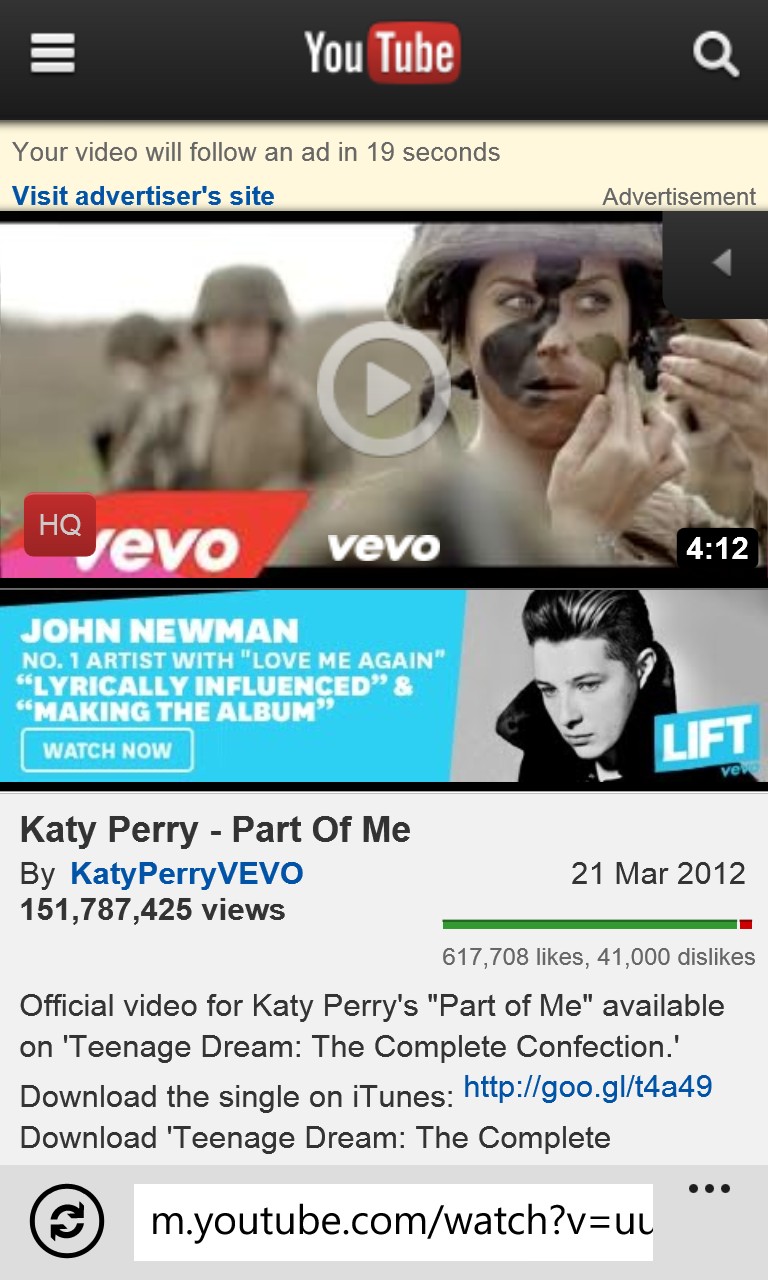

Two of the same VEVO-branded, ad-encumbered music videos, this time served by the mobile site and playing perfectly:

Once playback starts, it's into landscape and high definition playback...
In fact, it's interesting to make some comparisons for m.youtube.com with the latest version of the full YouTube client on Google's own Android platform:
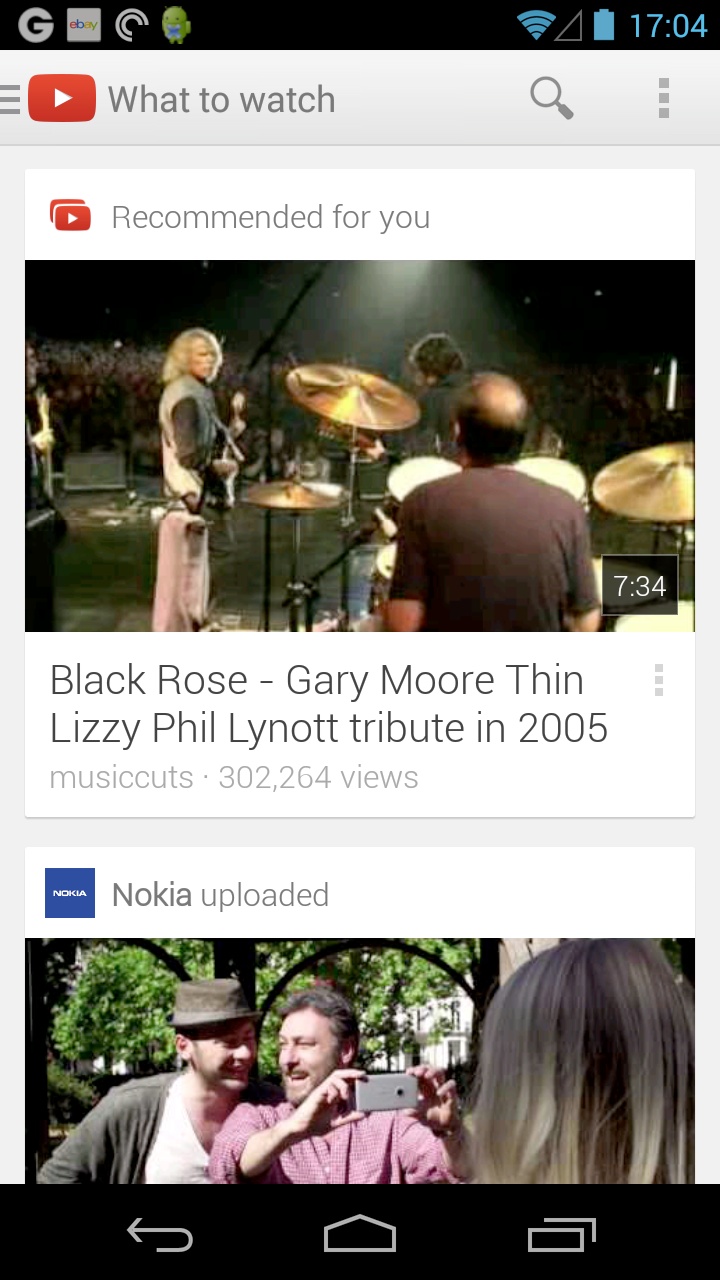
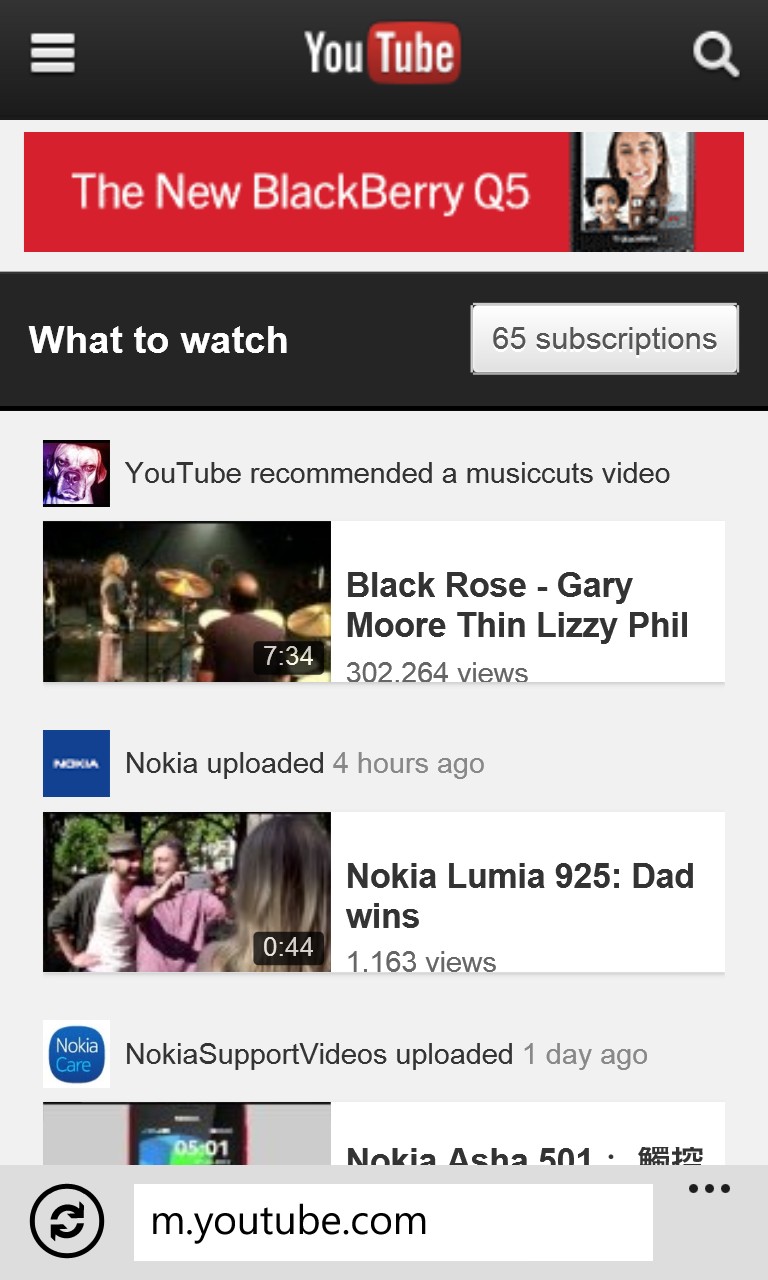
Starting to look through my YouTube subscriptions, with the Android client on the left and the mobile YouTube site in Internet Explorer on the right. There's significant loss of screen real estate from running in the browser, but on the other hand there's more shown because of the picture card-heavy interface of the Android version. Note also occasional static ads in the web version (in fact, this was the only occasion this happened in my screenshot session).

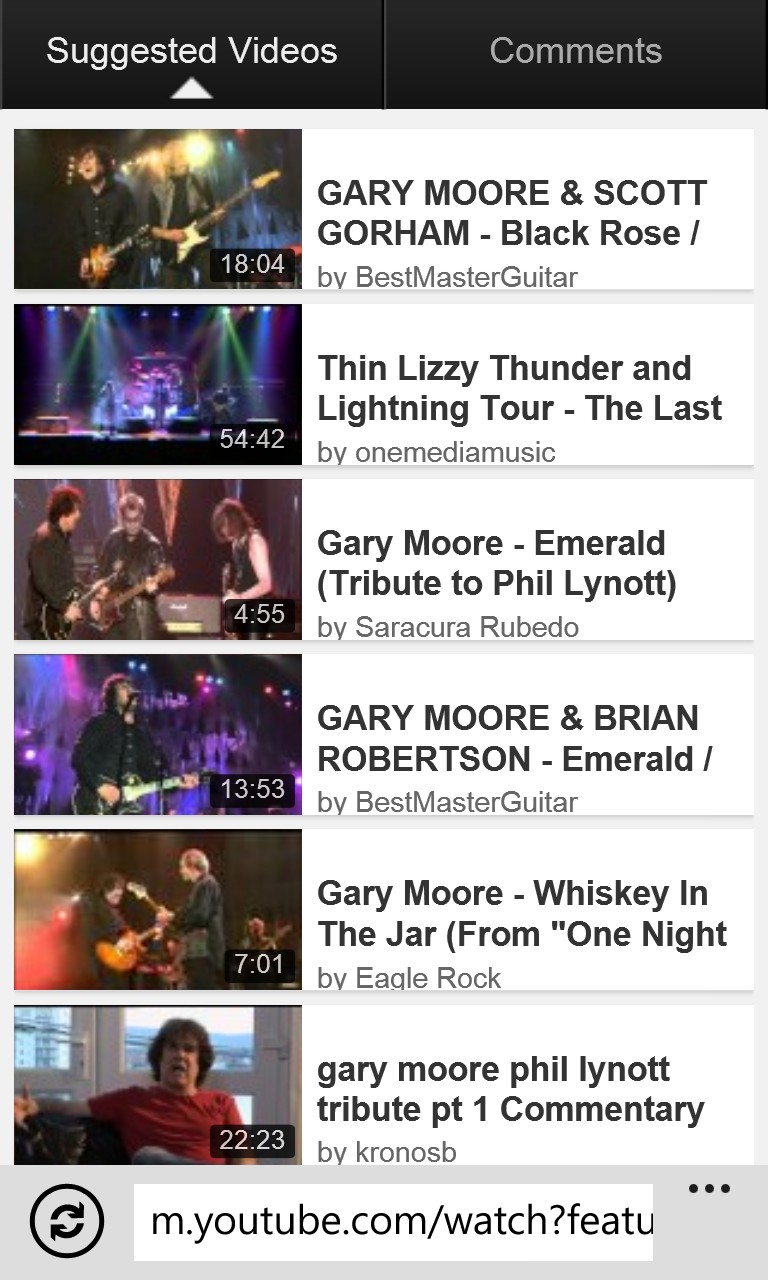
And similarly for my 'Suggested' videos, with fairly similar content in each presentation (again ignore the 'now playing' thumbail, not a feature I like in the latest Android YouTube version).
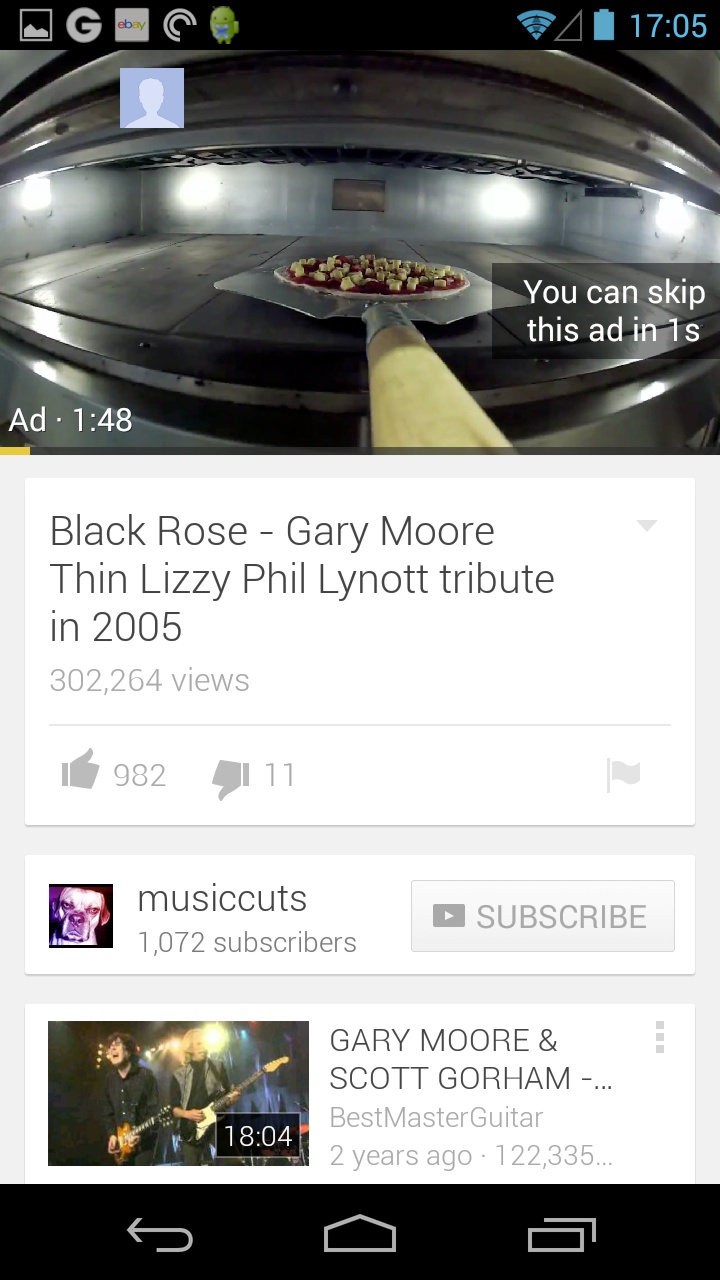

The overall experience isn't that different between the native Android client and the mobile web experience on Windows Phone, surprisingly - in fact, it can sometimes be better, since pre-roll ads which sometimes get forced with Android can be missing when viewed via m.youtube.com, so you often get into the videos faster.
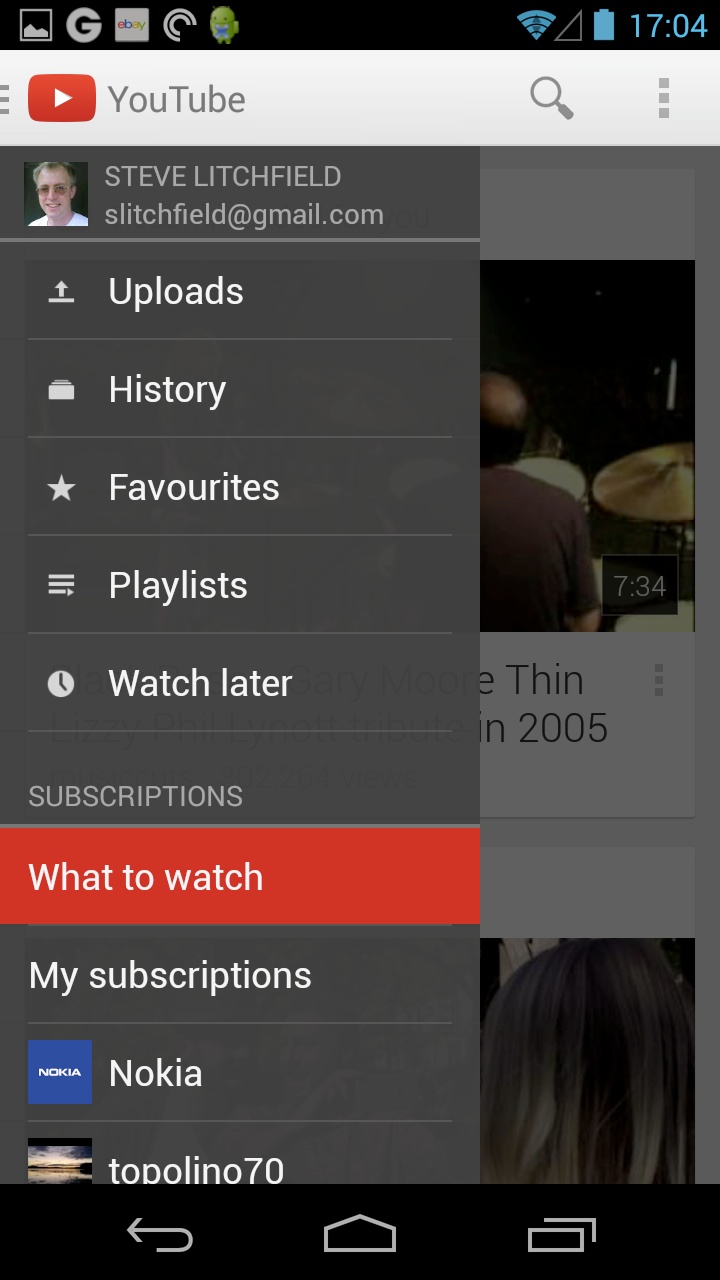

With the YouTube mobile site revamp around six months ago, the top left (three lines) icon now pops out the same main menu as the 'swipe from left' gesture on Android...
In short, although I agree that a dedicated client would undoubtedly be slicker, I'm tempted to ask (not for the first time on mobile) whether a YouTube client is absolutely essential. Given the ever-changing content on the site and its advertising needs, maybe it really is best to leave all that to Google, to forget the 'holy grail' search for an ultimate Windows Phone YouTube client and just 'favourite' m.youtube.com instead?
PS. Anyone know an easy way of pinning the YouTube web 'favourite' to the Start screen with a sensible icon rather than the default miniature screenshot?
